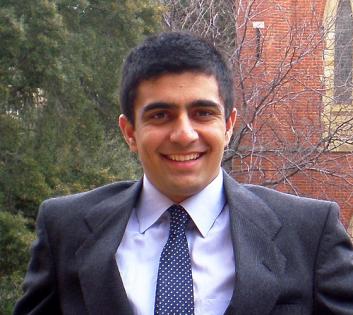The Australian of the Year award was introduced in 1960 to recognise the achievements of an outstanding Australian, and is a key component of the National Australia Day Council celebrations. The first winner was the pre-eminent medical researcher Sir Macfarlane Burnett.
The award has not been without controversy because of some of the winners in the past: 41% of the 57 winners (there have been joint winners in some years) up to, and including today, have been drawn from the Sports and Arts communities and only 20% of the winners have been women. Last year’s winner was actor and film producer, Geoffrey Rush.
Over the years, additional categories have also been introduced to recognise the work of older Australians (60+ years), younger Australians (16-30 years) and a ‘local hero’ who has made a real difference in a local community.
Congratulations to the 2013 winners who were announced in Canberra by Prime Minister Julia Gillard on Friday evening. The winners are decided by the National Australia Day Council chaired by former cricketer, Adam Gilchrist.
Australian of the Year
This year’s Australian of the Year is no stranger to the public spotlight – not least because she’s been in it since she was named women’s editor of the Daily Telegraph and Sunday Telegraph at just 23 years of age.Known to many in the ‘baby boomer’ age group and ‘Gen X’ as the high profile editor of Cleo magazine, who created the first nude male centrefold, Ita Buttrose has been part of everyday life in Australia for almost all of her 71 years. As well as a stellar journalism career which included being editor of The Australian Women’s Weekly and her former newspapers, she has also been a leading advocate of health and social causes.
Ms Buttrose is currently National President of Alzheimer’s Australia, Vice President Emeritus of Arthritis Australia and Patron of the Macular Degeneration Foundation. In the mid 1980s, Ms Buttrose was a leading figure in advocating for HIV/AIDS awareness ahead of the development of the first National HIV/AIDS Strategy White Paper in 1989.
Ms Buttrose is mum to two adult children, whose childhood adventures were well chronicled in her editorials, Kate and Ben.
Other nominees for Australian of the Year included a ‘mum campaigner’, Sonya Ryan, of Adelaide who has been instrumental in pushing for cyber safety after her daughter was groomed and murdered by a paedophile; teacher Andrew Hughes from Tasmania; and Indigenous advocates, Tom Calma from the ACT and Mark Grose and Michael Hohnen from the Northern Territory.
Senior Australian of the Year
The winner of the Senior Australian of the Year is Emeritus Professor Ian Maddocks, age 81, who is both one of Australia’s pre-eminent specialists in palliative care and a passionate peace advocate.
For years, Professor Maddocks has been a leading figure in the Medical Association for the Prevention of War and the International Physicians for Prevention of Nuclear War, an organisation that was awarded the Nobel Peace Prize in 1985.
He has been Professor of Palliative Care at Flinders University since 1988 and was the first President of the Australian Association for Hospice and Palliative Care and first President of the Australian and New Zealand Society for Palliative Medicine. He is recognised internationally for his work in palliative care and tropical and preventative medicine and continues to supervise postgraduate students and care for patients.
Young Australian of the Year
From war-ravaged Afghanistan to triple major law, science and arts student at the University of Western Australia, Akram Azimi, 25, is intent on ‘giving back’ to his adopted country.
Akram was an “ostracised refugee kid with no prospects” when he arrived in Australia as a 12 year old and ended up in Perth where he became head boy of the school and developed a passionate interest in Indigenous issues.
Akram uses his leadership and pastoral skills to help young people in remote and rural Western Australia and is a co-founder of an initiative to raise awareness about Indigenous issues within universities. His other philanthropic roles include helping disadvantaged remote Indigenous communities through True Blue Dreaming and mentoring young Indigneous people in the Kimberley region and Western Australia’s wheat belt. Akram is also mentoring a Special Olympics athlete to help raise community awareness of disability issues.
Australia’s Local Hero
This year’s local hero is Shane Phillips who was born, raised and still lives in Redfern in Sydney. He is a respected member of the Redfern Aboriginal community and the voice of the community on issues such as juvenile justice and Aboriginal deaths in custody.
Shane, 48, is CEO of the Tribal Warrior Association, a non-profit organisation directed by Aboriginal people and Elders that offers training to get people job-ready and gives emergency relief to struggling families.
Shane also runs a life mentoring program to help Aboriginal and Torres Strait Islander young people. Since introducing a Clean Slate Without Prejudice program in 2009, in collaboration with the NSW Police, the number of robberies committed by local youth has declined by 80%.
Further information
Check out all the nominees from each state and territory, including Motherpedia contributor, Dr Gerry O'Callaghan at www.australianoftheyear.org.au.



















__small.png)










